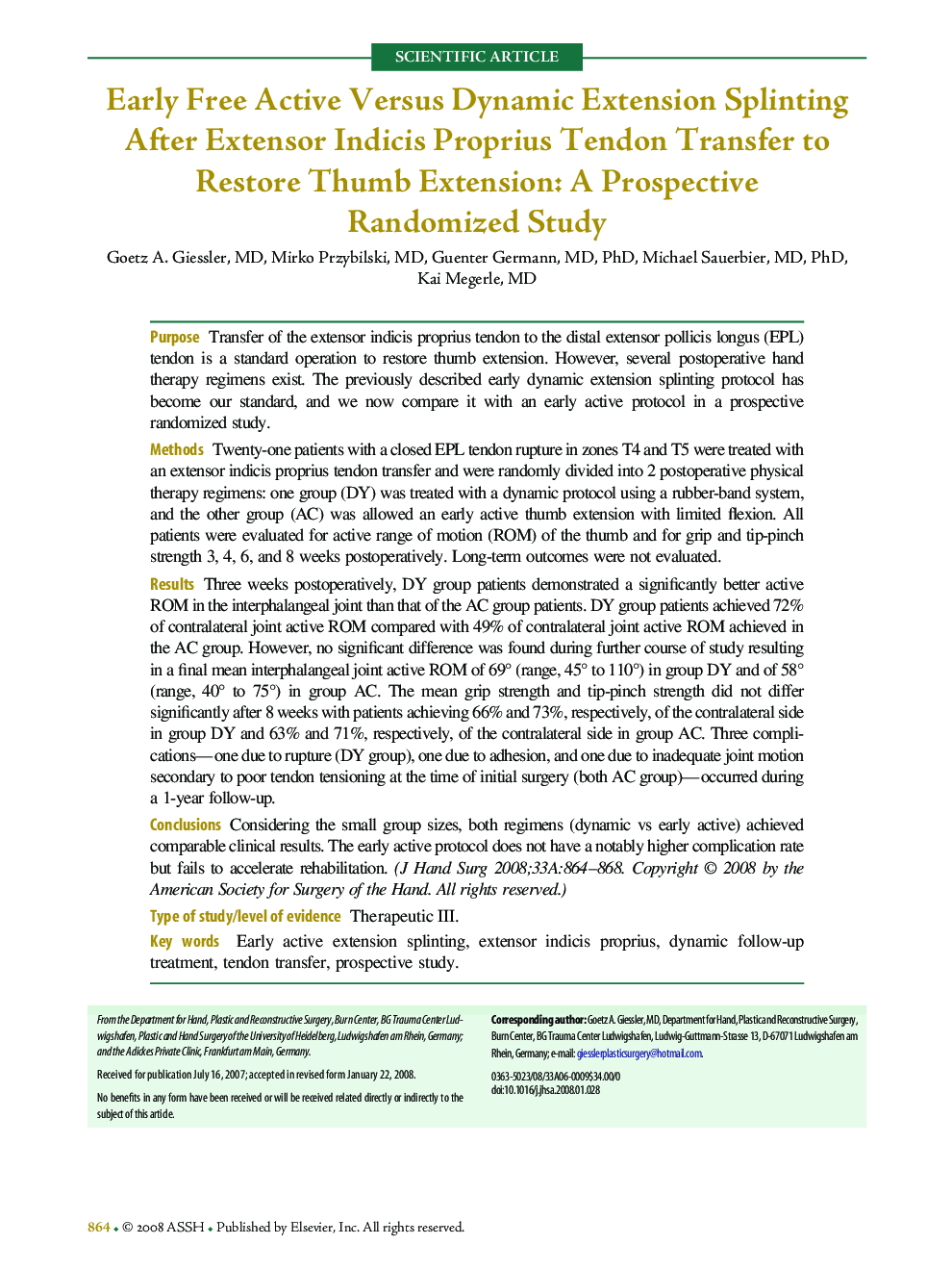| کد مقاله | کد نشریه | سال انتشار | مقاله انگلیسی | نسخه تمام متن |
|---|---|---|---|---|
| 4068452 | 1604442 | 2008 | 5 صفحه PDF | دانلود رایگان |

PurposeTransfer of the extensor indicis proprius tendon to the distal extensor pollicis longus (EPL) tendon is a standard operation to restore thumb extension. However, several postoperative hand therapy regimens exist. The previously described early dynamic extension splinting protocol has become our standard, and we now compare it with an early active protocol in a prospective randomized study.MethodsTwenty-one patients with a closed EPL tendon rupture in zones T4 and T5 were treated with an extensor indicis proprius tendon transfer and were randomly divided into 2 postoperative physical therapy regimens: one group (DY) was treated with a dynamic protocol using a rubber-band system, and the other group (AC) was allowed an early active thumb extension with limited flexion. All patients were evaluated for active range of motion (ROM) of the thumb and for grip and tip-pinch strength 3, 4, 6, and 8 weeks postoperatively. Long-term outcomes were not evaluated.ResultsThree weeks postoperatively, DY group patients demonstrated a significantly better active ROM in the interphalangeal joint than that of the AC group patients. DY group patients achieved 72% of contralateral joint active ROM compared with 49% of contralateral joint active ROM achieved in the AC group. However, no significant difference was found during further course of study resulting in a final mean interphalangeal joint active ROM of 69° (range, 45° to 110°) in group DY and of 58° (range, 40° to 75°) in group AC. The mean grip strength and tip-pinch strength did not differ significantly after 8 weeks with patients achieving 66% and 73%, respectively, of the contralateral side in group DY and 63% and 71%, respectively, of the contralateral side in group AC. Three complications—one due to rupture (DY group), one due to adhesion, and one due to inadequate joint motion secondary to poor tendon tensioning at the time of initial surgery (both AC group)—occurred during a 1-year follow-up.ConclusionsConsidering the small group sizes, both regimens (dynamic vs early active) achieved comparable clinical results. The early active protocol does not have a notably higher complication rate but fails to accelerate rehabilitation.Type of study/level of evidenceTherapeutic III.
Journal: The Journal of Hand Surgery - Volume 33, Issue 6, July–August 2008, Pages 864–868